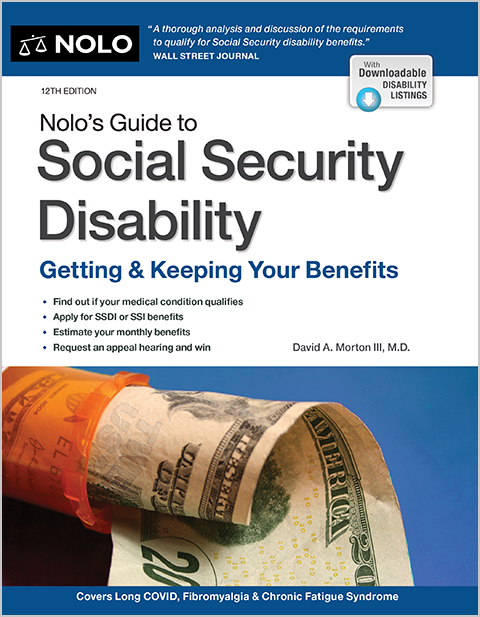In states with Medically Needy Medicaid programs, individuals may qualify for Medicaid if they have medical expenses that significantly reduce their income.
Medicaid provides health insurance to adults and children with limited incomes. The program is funded by both the federal government and the states, but each state manages its own Medicaid program.
Eligibility guidelines for Medicaid vary from state to state, but, in general, you must be low-income and have few assets to qualify. In addition, there are several categories of eligibility for Medicaid, such as those who are blind, disabled, pregnant, or over 65.
There are people who satisfy Medicaid's categorical eligibility requirements, like being disabled, pregnant, or over 65, but who don't satisfy the financial eligibility requirements because their income is too high to qualify for Medicaid. In some states, those individuals may still qualify for Medicaid if they have significant medical expenses that reduce their income below a certain level, through what are called "medically needy" programs. All states have the option of covering so-called medically needy individuals, but not all do.
Who Is Eligible for Medically Needy Medicaid?
States that choose to have medically needy programs may decide not to offer the medically needy option to all categories of Medicaid-eligible people. For example, a state might chose to offer the medically needy program to disabled but not elderly people. In fact, several states, including Tennessee and Texas, don't have a medically needy pathway for seniors. However, states that offer any medically needy programs must offer them to most children and pregnant women.
Which States Have Medically Needy Medicaid Programs?
There are 33 states, plus the District of Columbia, that have medically needy programs:
|
Arkansas |
California |
Connecticut |
|
Florida |
Georgia |
Hawaii |
|
Illinois |
Iowa |
Kansas |
|
Kentucky |
Louisiana |
Maine |
|
Maryland |
Massachusetts |
Michigan |
|
Minnesota |
Montana |
Nebraska |
|
New Hampshire |
New Jersey |
New York |
|
North Carolina |
North Dakota |
Pennsylvania |
|
Rhode Island |
Tennessee |
Texas |
|
Utah |
Vermont |
Virginia |
|
Washington |
West Virginia |
Wisconsin |
In a few other states, individuals with disabilities and people who are 65 and over can still qualify for Medicaid by showing that their medical expenses reduce their income below the Medicaid eligibility level (even though, technically, some of these states don't have medically needy programs). These states are called "209(b) states." In 209(b) states, people who receive Supplemental Security Income (SSI) don't automatically get Medicaid.
Some 209(b) states have income eligibility limits that are lower than the SSI amount (preventing some people who qualify for SSI from qualifying for Medicaid).
While most 209(b) states have medically needy programs, allowing those with high medical expenses to still qualify for Medicaid, there are three 209(b) states that don't have medically needy programs:
- Missouri
- Ohio, and
- Oklahoma.
In Missouri and Ohio, individuals with disabilities and those who are 65 and over can still qualify for Medicaid by showing that their medical expenses reduce their income below the Medicaid eligibility level. Oklahoma doesn't have a spend-down program since its Medicaid eligibility criteria is no more restrictive than the federal criteria. (If you qualify for SSI in Oklahoma, you qualify for Medicaid.) The same is now true for Indiana.
Read more about 209(b) states in our article on Medicaid eligibility and SSI.
How Medically Needy Medicaid Programs Work
If you live in a state with a medically needy program, you can use your medical expenses to reduce, or "spend down," your income to qualify for Medicaid. States establish a spend-down period, during which they look at your income and expenses to see whether you qualify for coverage. You must re-qualify for Medicaid after each spend-down period. Spend-down periods range from one to six months.
For example, if your state has a spend-down period of six months, then you must show that you have enough medical expenses within the six months to satisfy your spend-down (that is, to lower your income below the medically needy income limit). Once you have enough expenses, then you are eligible for Medicaid for the rest of the six months. After the six months are up, you must satisfy the spend-down again.
States calculate your spend-down amount by comparing your income to an income standard called the Medically Needy Income Limit (MNIL). For example, if the MNIL in your state is $300 per month and your monthly income is $1,500, then you would have to show medical expenses of $1,200 (the difference between your income and the MNIL). If the spend-down period in your state is three months, you would have to show medical expenses of at least $3,600 ($1,200 multiplied by the three-month spend-down period) before you could qualify for Medicaid.
You don't need to show that you actually paid the medical expenses to meet your spend-down. You just have to show proof that you incurred the expenses. States vary in what kind of expenses are allowed, but all states give credit for Medicare premiums and other health insurance premiums.
Most states vary the Medically Needy Income Limits based on the number of individuals in the household, and some states also vary MNILs by the cost of living in different regions of the state. In any case, MNILs are very low, and they can be hard to meet unless you have significant medical expenses. MNILs are usually well-below the federal poverty level, and can be as low as a few hundred dollars a month.
Some states offer the option of paying your spend-down amount directly to the state, rather than showing proof of medical expenses. This "pay-in spend-down" option can be useful for people who need Medicaid coverage but who may not have enough medical expenses in a given period to maintain their eligibility. The pay-in spend-down amount acts like a health insurance premium. Not all states with medically needy programs or the 209(b) spend-down option offer the pay-in spend-down option. A few that do are Illinois, Minnesota, Missouri, Montana, New York, Ohio, and Utah.
Medicaid Expansion and the Medically Needy Medicaid Program
Most states have chosen to expand Medicaid under the Affordable Care Act to low-income adults under age 65. In these states, some people who might previously have qualified for Medicaid under a medically needy program may now qualify more easily, under the terms of the state's Medicaid expansion. However, Medicaid expansion doesn't affect those who are 65 or older. Because the elderly often have significant medical expenses in the form of long-term care costs, medically needy programs remain important for them.


